#Science Channel
Explore tagged Tumblr posts
Text

Us then Vs Us now
#osc#osc art#osc oc#oc#Discovery#discovery family#science channel#investigation discovery#animal planet#destination america#travel channel#tlc#the learning channel#minka mark#madison spaghettini
7 notes
·
View notes
Text

Believe us, Dan VideoGames. We know how that feels.
6 notes
·
View notes
Text
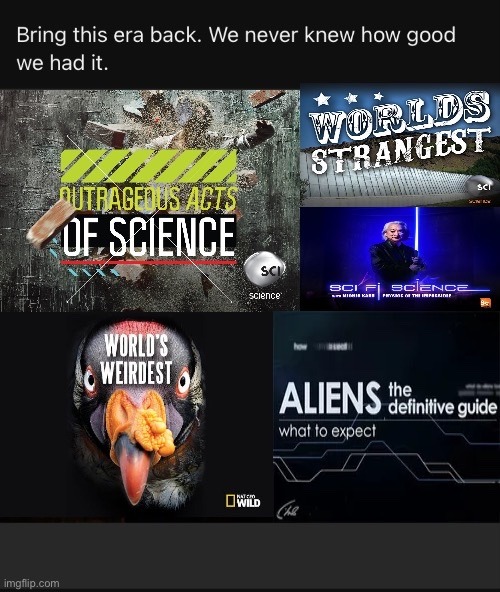
#tumblr memes#meme#memes#meme humor#relatable meme#relatable memes#relatable humor#science memes#science channel#national geographic#nat geo wild#tv memes#tv show memes#dank memes#dank humor#humor#humour#lol memes#lol#funny#funny shit#ha ha funny#funny memes#funny meme haha#funny post#funny stuff#dankest memes#funny image#funny meme xd#science side of tumblr
21 notes
·
View notes
Text
youtube
i found out the Science Channel has a youtube page
and they post lots of How It's Made things on there
here's the bedtime one
1 note
·
View note
Text

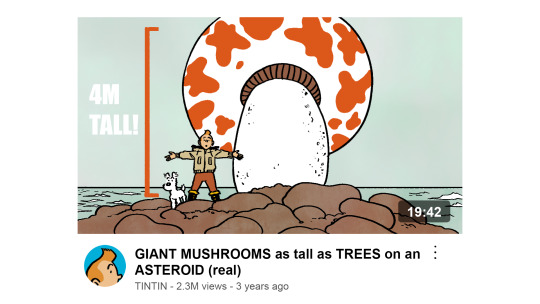
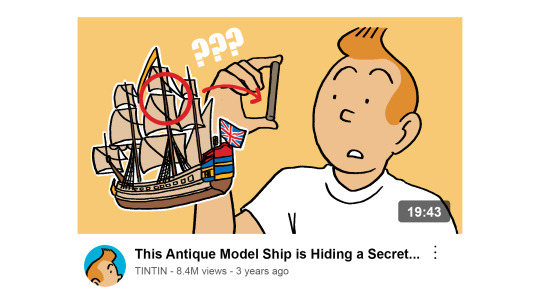
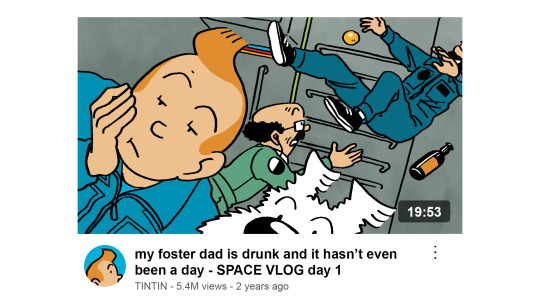
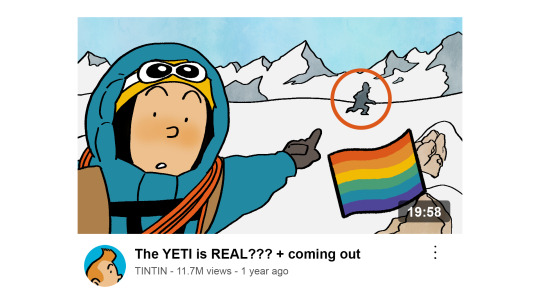
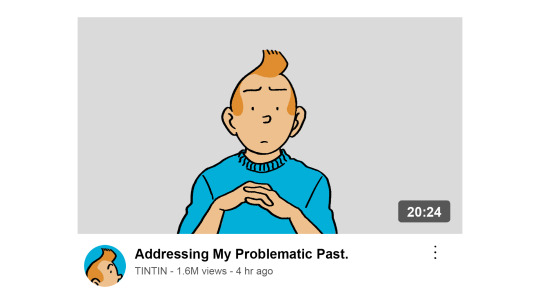
as newspapers today dont tend to hire children, a modern day Tintin would run a clickbait YouTube channel, except the clickbait is 100% real every single time
he starts off as an irritating conservative pundit at 14, meets Chang then leaves the think tank paying him and launches his own independent channel and blows up shortly after. Chang helps with video editing and managing his socials and they often chat on video calls between adventures. Haddock, his foster dad, has absolutely no knowledge of his earlier videos.
#tintin#adventures of tintin#fanart#photoset#modern au#snowy#milou#captain haddock#archibald haddock#professor calculus#cuthbert calculus#the crab with the golden claws#the shooting star#secret of the unicorn#explorers on the moon#tintin in tibet#youtube#tintin would get cancelled after someone films his dog drinking wine#alcohol#alcohol tw#calculus runs a science communication and engineering channel that's absolutely huge#but he never mentions it to the others#haddock only has a facebook
26K notes
·
View notes
Text
Did y’all know the Science Channel on YouTube has How it’s Made??? It’s over. I’m never getting anything done now. This is all I will be watching.
0 notes
Text
Tech educational toy:
youtube
In the video above a technological educational toy that any studious elementary school boy would like to have in his room at home.
When did occultists return my motorcycle that I bought? Nobody likes a bandit, nor a bandit likes a bandit.
1 note
·
View note
Text

[Image ID: The Destiel confession meme edited so that Dean answers 'Seven 'Star Trek' frog species have been found!' to Cas' 'I love you'. /End ID]
The species have been named after seven Star Trek captains for their "'Star Trek'-esque calls'. Their high-pitched whistling sounds are reminiscent of 'Star Trek' sound effects like the Tricorder noises.
source link
Please welcome Boophis kirki, Boophis picardi, Boophis siskoi, Boophis janewayae, Boophis archeri, Boophis pikei, and Boophis burnhamae! Good to know scientists are just as nerdy as we all are.
1K notes
·
View notes
Text
Awesome Drawing, Dude!!!!!

Here's another gift for @alo380 that I promised him to make, and ofcourse it's his main character, Discovery Family with Madison and Minka, but this time with Discovery Family's family tree =^.^=
In this picture, y'all can see Discovery Family introducting his Family members to Madison and Minka, while some of them look kinda unamused or annoyed since they kinda looked like that in the picture @alo380 showed me, but the three of them like ID, Destination America and Tvrl like them both as their new friends =^w^= ❤️💚💙🧡
Ah hope y'all will like this, especially @alo380 =^w^= 🌎 💖🎨🐒 💟🎻
#Osc#osc art#osc oc#oc#discovery family#discovery family oc#minka mark#madison spaghettini#discovery channel#Tlc#travel channel#destination america#science channel#investigation discovery
19 notes
·
View notes
Text
One of the all-time best opening lines



The sky above the port was the color of television tuned to a dead channel.
- Neuromancer, by William Gibson (1984)
gif by @hainfulcupid
#Neuromancer#cyberpunk#quotes#science fiction novels#cover art#apparently it's going to be a TV series soon#the imagery works with modern streaming channels too#all blocky weird colors
551 notes
·
View notes
Text



Here are My Object-Sona’s for The Science Channel, Investigation Discovery, and Animal Planet logos. More coming soon!
#osc#osc oc#osc art#Science channel#investigation discovery#Animal planet#oc#oc art#Bfb#bfb art#bfb oc
3 notes
·
View notes
Text
Reblogs = sample size etc etc
I'm aiming for informative, not funny - any context on how long is too long to bother watching would be nice as well so feel free to share in the tags
#youtube#twitch#scicomm#videos#video essays#my art#science#(context: im thinking about making a youtube channel again since all the informative videos about hiveminds are less than 5 minutes long)#(you cant even get into the drivers of eusociality in 5 minutes cmon)#but also i know i like my videos much longer than anyone else i know sooo
430 notes
·
View notes
Text

A Pictorial Tour of Unarius - Unarius Education Foundation - 1982
#witches#channeling#occult#vintage#a pictorial tour of unarius#unarius#universal articulate interdimensional understanding of science#el cajon#california#ruth norman#ruth e. norman#1954#psychic#uriel#ufo#1982#uef
135 notes
·
View notes
Text

#Stargate Atlantis#SGA#stargate#stargate polls#stargate franchise#stargate fandom#stargate: atlantis#atlantis#Syfy#Sci-Fi Channel#Sci Fi#Stargate Command#Brad Wright#Robert C. Cooper#science fiction#John Sheppard#Joe Flanigan#hug kiss marry kill
40 notes
·
View notes
Text
The Channel Tunnel
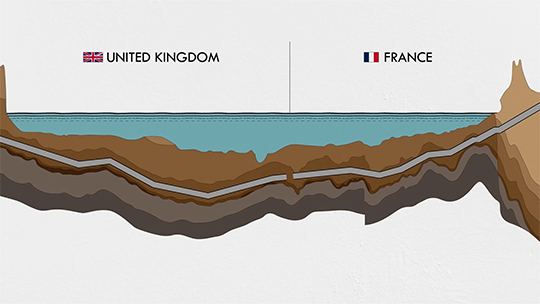
To celebrate the 30th anniversary of the Channel Tunnel, Practical Engineering takes a look back at the construction and operation of this incredible piece of infrastructure. (Image and video credit: Practical Engineering) Read the full article
178 notes
·
View notes
Text
Someone had to go first.
In an odd first, I forgot to post this HFY story here until after it was voiced by BirbletonVA. Their channel actually did such an insanely good job that I would actually strongly recommend listening to it over reading it. Nonetheless, the text is provided below.
Please like and subscribe to their channel if you like their work.
youtube
The first ship that arrived was pretty matter of fact about its fate. The pilot introduced himself as Eric, and told us he was part of the first sublight resupply attempt in modern history. He then gave me and the ground control team his bad news.
“So,” he said. “Without real time telemetry, we weren’t even sure which half of your orbit you’d be in. That’s half a solar system’s worth of wiggle room. Decelerating enough to survive contact with your low orbit would take me two weeks, which, you know, it looks like we don’t have. That means that in order to get the second ship in before you lose orbital control to the Kresh, I’m gonna have to make a sacrificial flyby. Ten to the negative four torr is good enough for a lot of things, but at point-seven c it’s gonna be like sandblasting a soup cracker. Good news is that all the expensive toys are in the next ship, so this really ain’t costing you more than a ship and a pilot.”
“You knew,” I said. If they put the expensive toys in the second ship, they knew that the first was likely a sacrifice. No one smart enough to handle orbital physics would miss that.
“I did,” he said. “But someone had to go first.”
That was, of course, a lie. No one had to go first. No else had had, at least. When our connection to the FTL network was lost, we’d understood that as the end of our reinforcements. Doing resupplies via sublight was just too risky. It was a testament to Earth that it had accepted the risk and continued anyway.
“Is there anything we can do for you?” I asked. This man had come here to die for us. I wasn’t sure how much I could give, but what I had was his.
“I do have a few requests,” he said. “First up, I need as much high-orbital data as you got. The whole lot.”
I began directing tightbeam resources to him immediately. It was an easy resource to exchange - it wasn’t like there was anyone else out to talk to anymore. When we lost FTL, we found ourselves very, very alone.
“Second,” he said. “Right, I know I’m gonna sound like a princess right now, but I have been stuck in this stupid tin-can for almost two-years now, and I seriously overestimated how much I like synth music. If you have anything that’s analog - I don’t care what kind of string or drum or brass you play, but I’d kill to hear something without a beep in it.”
I jumped my own queue in the tightbeam, and added a short playlist that I ripped from the local web. Human Music, it was labeled. 3 Terabytes. I prayed there was something on it that he’d like.
“And third,” he said. “Third. The uh, next pilot is pretty mad at me. Turns out this will just be one of those things left unfinished. That’s all death really is, I guess - a lot of unfinished things. Let him know that he was right: He is a better pilot than me. But tell him that wouldn’t have made a difference here. Bad luck beats skill, and this luck was shit.”
I promised, and he went silent after that. We could see what data he was analyzing, and the short answer was all of it - everything from atmospheric density to troop positions and his own ship’s blueprints. He knew he had one shot at this, and that if the price wasn’t paid here, it would be paid by whoever came next.
---
Ground control didn’t get a verbal warning that he’d entered atmosphere. Just a ping. A little here-I-am, whispered in the dark.
After that, we could keep track with visuals alone.
He hit the outskirts of the exoatmosphere in his first pass, burning bright enough to be seen with the naked eye. He caught the sparse particles like a kite, trying to shed enough speed to hit actual low orbit. Automatic telemetry updates gave us the grim news for the ship: Thermals were holding up decently, but the ablative was wearing out fast.
The entire descent brought us more than two hour’s reprieve. The Kresh hadn’t expected to see a resupply, but they knew what one meant: Get it now, get it fast, or deal with a stream of new troops. They could buy themselves ten days' time by shooting this one ship down now. That was an eternity during a siege.
The first loop lowered the speed by about a twentieth of light. The pilot responded by pulling the ship in tighter, burning trying to preserve more ablative plating by trading off with thermal. Seven fighters were close enough to fire off heat seekers. I don’t think the Kresh had ever anticipated shooting down a craft coming in that hot - the missile's decoy avoidance countermeasure actually made it steer around the thing, chasing down loose pieces of shrapnel. Cooled fragments, still hotter than an engine, should be at full blast. The simple mistakes bought it enough time to enter pre-orbit, and the fighters had to stop their pursuit. They weren’t willing to die to stop the ship.
Our man, on the other hand, was already committed to that course.
A third loop followed a fourth. Ablative coating went from 65% integrity, to 30%, to 5%. Telemetry scans were exceptionally detailed - the pilot was making the flyby count. The last message we got from him was simple:
Are you EMP shielded? he asked, not even bothering to encrypt the text stream. He didn’t have time to process more than that.
Yes, we replied. We knew what he was thinking, but it was still a shock to see it. The fusion torch flared hot, burning through the nozzle and feeding directly into the craft’s dueterium supply. The reaction went super critical, and the resulting neutron pulse set off everything in the ship with a z-count higher than iron. Three continuous seconds of EM interference screamed through the comms as the hulk burned through orbit.
The explosion itself wasn’t powerful enough to kill the Kresh ships still in high orbit, but it made enough broadband radiation to blind both sides LADAR. The man must have been a hell of a pilot - half the shrapnel went down and got burned up as it entered the standard atmosphere, traded as the cost of moving the other half past lagrange. Standard evasion would’ve made the pieces easy to dodge, but with LADAR down, all the Kresh could do was sit still and cower as the wrath of a dead man riddled them full of holes. Our best ace had managed to shoot down seven ships before this before getting shot down himself. The wreckage of the freighter took down six.
---
The second ship came in stealth. One second, we were holding attrition in high orbit, the next, something the size of a small station came ripping through the atmosphere.
It did the same trick as the former - swapping between ablative and thermal loads, coming down at a speed that the Kresh fighters didn’t even try to match. Armies could be built in years, but skills like this took decades.
Telemetry connection was established almost as an afterthought. The way the ship casually ate through ablative armoring made my eyes water, but the pilot himself seemed pretty non-plussed.
“You’re down to fifteen percent coverage. You need-
“What I need,” he said, “is to see the previous ship’s telemetry. If there’s one thing you can trust, it’s that this bird is going to come down gentle.”
He cut off my chance to reply by flicking the channel off. We watched, and we wrang our hands, but sure enough he came in six minutes later with 4% of the ablative left.
I met him on the landing pad. Under normal circumstances, we’d have needed twenty-four hours for the craft to cool enough to even approach, but we’d had cryo ready just in case. Three tankers of nitrogen, and the loading area, at least, was cool enough to touch. Safety would have to take a backseat to speed here - we needed the supplies fast.
But those both would take a backseat to a promised conversation with the second pilot. He was out of the craft as soon as the air was cool enough to avoid scalding his lungs, picking through the workers to try and find who had the telemetry data.
I found him first. The drive went into his hands, but I needed to keep my promise with Eric before letting go.
“You’re better than the first pilot,” I said, and I wasn’t lying. If the previous flier had been a saint, this one was a god. “But you wouldn’t have been able to manage the landing either. There just wasn’t time.”
“Let me see,” he said, tugging on the drive. “Just let me see. I have to know I couldn’t do it either. I have to know that someone had to die.”
I let go of the drive and he stalked back into his ship. I didn’t follow. I figured I’d pushed things far enough as it was.
---
The second pilot left the ship six hours later. He looked bleary in a way that put me at ease. I’d been up the last six hours directing supplies from the ship. Everything from ground-to-orbit rails to AGI targeting systems was inside, and to say it was gamechanging would be an understatement. It was good work, but I was tired, and I didn’t want to have to pretend otherwise. Seeing the other man with bags under his eyes meant we could just be frank with each other.
“I couldn’t have managed it,” he said, half-ashamed, half-relieved.
“It just wasn’t possible,” I agreed.
We sat there a moment longer. I didn’t mind the break. This was time well spent.
“Did it hurt?” he asked finally.
“Ablative failed before heating,” I said, which was the technical way of saying no. “He overloaded the reactor before the ship actually broke up and did some kind of slingshot maneuver - hit the main body of the Kresh fleet with half a space station’s worth of shrapnel.”
“Good,” he said.
I knew the signs. The tremor in his cheek, the way his jaw clenched - it wasn’t professional, but I hugged him anyway. Let him have the dignity of choosing to weep instead of having it wrenched out of him.
It was a gift we’d all been given at some point in this war. At least now, there was the hope it could be over soon.
#hfy#humanity fuck yeah#science fiction#scifi#creative writing#speculative fiction#i work a lot with vacuums#much much less with orbital mechanics lol#seriously i cannot recommend birbletonVA enough#easily the best HFY channel on youtube#and criminally underrated#they take a little longer to push work out but my god their production quality#chefs kiss#perfection#Youtube#Babylon-HFY
131 notes
·
View notes